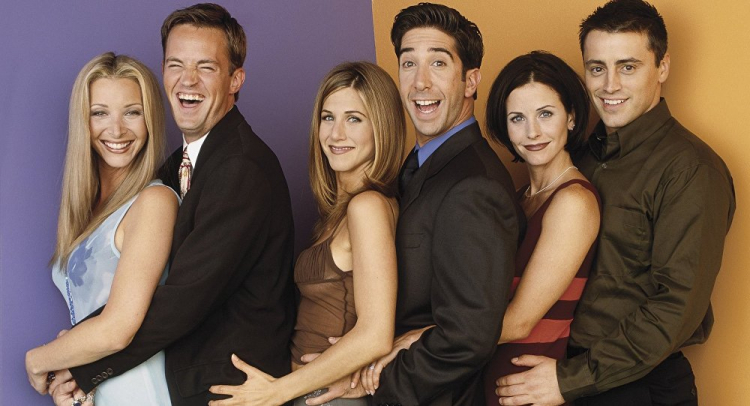New Show? No Thanks.

Fifteen years ago, tears were shed all over the world as the show Friends aired its last episode. Similarly this year, my younger sister cried as she watched all six actors head off to "Central Perk", the show's famous coffee shop, for the last time. How is a show that ended more than a decade ago still topping the charts? As viewership continues to rise, one has to wonder if nostalgia is responsible for this shows longevity or if the storyline genuinely transcends generational differences.
As the end of 2018 drew to a close, viewers were left distressed as rumors began to spread that the streaming giant, Netflix, would be removing the seasons of Friends from its online platform. Viewers took to social media in a frenzy and disbelief begging Netflix to leave the internet's beloved sitcom alone. Calm was restored when the company announced on Twitter, “The Holiday Armadillo has granted your wish: Friends will still be there for you in the US throughout 2019.” To keep this promise, Netflix reportedly had to pay a whopping one hundred million dollars.
But it was worth it. Matt Leblanc, who plays one of the main characters in the show, revealed that kids came up to him and asked if he was Joey’s dad. He added that he felt like every year, a new generation of viewers discovers the show. And as it turns out, Friends is the second most watched show on the platform, behind The Office. It doesn't come off as a surprise, considering that Fraser and That 70s show also still topping the charts years after their original air dates. While bizarre, this phenomenon isn't random, there are many digital aged forces working to promote the longevity of the show's popularity.
Matt Leblanc on Jimmy Kimmel. Credits: youtube.com
"Growing up, I was always exposed to old T.V. shows. They were broadcasted on cable and were often playing in the background in my house" shares Miriame, a sophomore at AUP. It is true that many cable channels still broadcast old T.V. shows. Friends, for instance, is omnipresent in the networking landscape. Not only is it broadcasted in foreign countries like France, but it airs every day in some cities in the United States.
The show hasn't been erased from mainstream television, but for even younger people that spend less time watching traditional T.V., or did not have exposure to old shows like Friends before, the internet has become a valuable archive for pop culture from the past.
Social media has had a large role to play in making old T.V. shows popular to the younger generation. Take Instagram, for instance. It is filled with accounts that post about old movies, songs, and T.V. shows. They help familiarize younger viewers with entertainment from the past when they might not have had exposure to it otherwise. Pop-culture nostalgia accounts aren't fringe, either, many of them are extremely active, posting multiple times a day. Some of them even boast close to one million followers.
Beyond this, there are several platforms that have made content new and old available to watch in a couple of clicks. The Apple Store and streaming services like Netflix have almost any program you could ever want to see. This accessibility to content has clearly helped old shows like Friends rise in popularity among younger viewers. After people see posts on Instagram about shows from the past, with one Google search, they are able to stream many of them with ease. The rates of viewership among youth worldwide confirm the weight of this factor into the popularity of the show.
Season 4 Episode 1: The One With the Jellyfish. Credits : GiphyWhat comes as the biggest surprise, is the fact that Friends has survived the test of time, despite the way we speak in public changing so much in the past couple of decades. In an era where political correctness and social consciousness are important parts of global dialogue, it's odd to see that a show where homophobic jokes and undertones are recurrent themes can still be so popular. It's common today for people to get "canceled" on social media for tweets that were made years ago with problematic statements, yet, for some reason, the same logic doesn't apply to old, beloved shows like Friends.
Ultimately, I think that broadcasting platforms and social media aren't the most important factor in what makes for the longevity of the show. They're only a tool that helps to make it known to more people. It seems that the main factor that keeps Friends viewership so high are the personalities of the characters. People of all ages seem to relate to them and their friendships and thanks to social media the characters have become even more familiar. They were written to be relatable and even more importantly, lovable, perhaps so much so that they have been allowed a pass on our current cultural norms.








